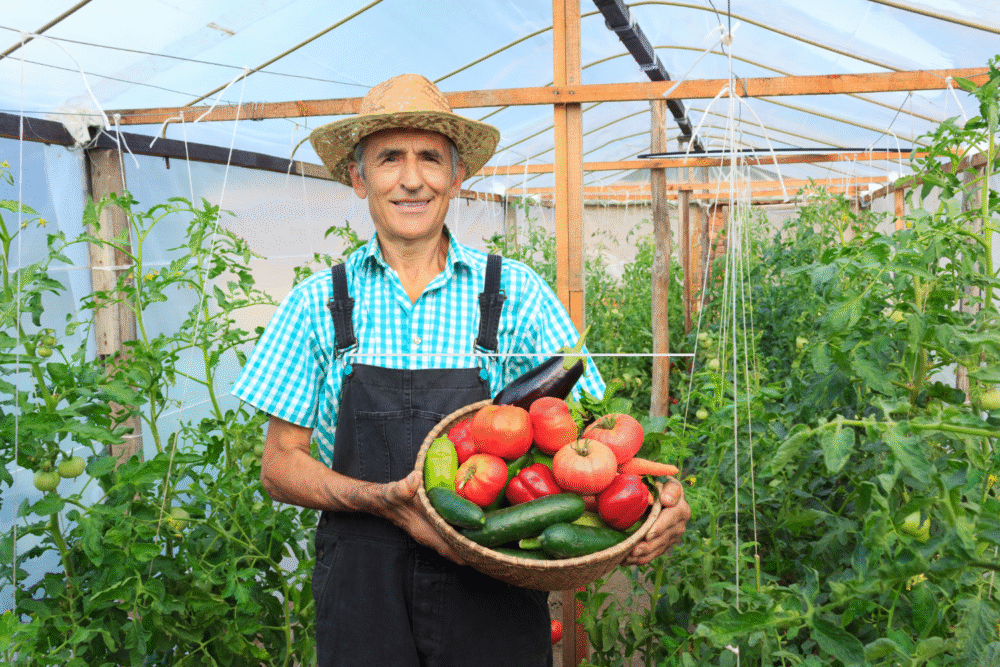Discover how timeless skills like gardening, repairing, and handcrafting remain valuable today, helping you cultivate independence and sustainability in everyday life.

Traditional skills refer to practical knowledge and techniques passed down through generations, including handcrafting, gardening, food preservation, basic repairs, and resourceful problem-solving. These skills emphasize self-sufficiency and hands-on learning, encouraging the use of manual methods and intergenerational wisdom rather than reliance on modern technology or convenience-based solutions.
Understanding and practicing these skills today is important for fostering independence, reducing waste, and saving money. They also promote environmental sustainability and resilience, connecting us with practical traditions that enhance problem-solving and community support over the long term.
1. Mastering the art of hand-sewing and mending clothes at home.

Hand-sewing and mending is the practice of repairing clothing and textiles by hand using simple tools like needles, thread, thimbles, and basic stitches such as running, backstitch, and whipstitch. It includes darning socks, sewing on buttons, patching tears, and reinforcing seams to extend the life of garments. The approach favors careful observation of fabric grain and stitch tension, and it can be learned incrementally through small projects that build dexterity and confidence in handcrafting techniques that our grandparents used routinely.
This skill matters because it supports self-sufficiency, reduces waste, and saves money while preserving items with sentimental or practical value. A practical tip is to assemble a small mending kit with matching threads, a selection of needles, spare buttons, and fabric patches, and practice three go-to stitches until they become second nature. Rule of thumb is to mend small issues early before they grow into irreparable damage, and consider learning from older family members to capture intergenerational wisdom.
2. Growing and preserving homegrown vegetables for year-round use.

Growing and preserving homegrown vegetables covers planting, tending, harvesting, and storing produce using tried-and-true techniques like succession planting, crop rotation, canning, pickling, drying, and freezing. It blends basic gardening know-how with preservation methods to keep food edible and nutritious year-round. Starting with easy crops such as tomatoes, beans, and root vegetables helps build success, and learning the basics of soil health, watering, and pest management leads to better yields and more reliable harvests.
This practice matters because it increases food self-reliance, reduces grocery costs, and connects people with the source of their food while lowering environmental impact. A practical checklist includes choosing vegetables suited to available space, learning one preservation method well, labeling containers with dates, and storing preserved goods in a cool, dark place. Rule of thumb is to preserve when produce is at peak quality, and sharing surplus can strengthen community resilience.
3. Cooking meals from scratch using simple, wholesome ingredients daily.

Cooking meals from scratch means preparing food using whole, simple ingredients rather than relying on prepackaged or highly processed products. It typically involves basic techniques like sautéing, roasting, simmering, and seasoning to create balanced meals from staples such as grains, legumes, fresh produce, and lean proteins. The practice emphasizes understanding flavors, portioning, and kitchen fundamentals so homemade dishes are both nutritious and economical while offering creative control over ingredients and waste reduction through batch cooking and leftovers.
This habit matters because it supports healthier eating, sharper practical knowledge about nutrition, and budget-friendly meal planning. A practical tip is to build a rotating list of five reliable recipes, keep a stocked pantry of versatile staples, and batch-cook or freeze portions for busy days. Rule of thumb is to prioritize whole ingredients and simple techniques, and to experiment gradually to develop confidence without feeling overwhelmed.
4. Fixing household items with basic tools instead of buying new.

Fixing household items with basic tools involves diagnosing common problems and using simple hand tools like screwdrivers, pliers, a hammer, adjustable wrench, and a basic multi-tool to repair rather than replace. Typical repairs include tightening loose fittings, replacing worn hardware, patching small holes, fixing squeaky hinges, and maintaining small appliances. The process starts with careful observation, matching replacement parts, and following safe, step-by-step fixes that emphasize patience and incremental learning to build repair skills over time.
This approach matters because it saves money, reduces waste, and fosters resourcefulness by extending the usable life of belongings. Practical guidance is to create a starter toolkit, learn to follow manufacturer instructions or reputable repair guides, and practice on noncritical items first. Rule of thumb is to unplug electrical items before attempting repairs and consult a qualified professional for complex electrical or structural work to avoid injury or further damage.
5. Efficiently managing household budgets without relying on technology.

Efficient household budget management without relying on technology means using simple analog systems to track income, expenses, savings goals, and recurring bills. Techniques include envelope budgeting, written ledgers, paper calendars for bill dates, and periodic reviews to reconcile spending against priorities. The method helps cultivate awareness of cash flow, encourages intentional spending, and promotes financial habits like setting aside a fixed savings amount and planning for irregular expenses using predictable manual routines.
This skill matters because it builds financial discipline, reduces dependency on apps, and strengthens decision-making about resource allocation. A practical tip is to maintain a weekly check-in ritual, categorize expenses, and set clear short-term and long-term goals on paper. Rule of thumb is to save at least a small fixed percentage of income first, then budget the remainder, and to keep physical receipts or a simple notebook to monitor patterns and avoid common mistakes like assuming digital convenience equals better control.
6. Navigating using maps and natural landmarks without GPS devices.

Navigating using maps and natural landmarks is the practice of orienting and moving through landscapes by reading paper maps, using a compass, and recognizing features such as rivers, ridgelines, or star positions. It involves understanding scale, contour lines, and bearings to plan routes and estimate travel times without electronic aids. Training in map reading, compass use, and situational awareness teaches how to triangulate position with visible landmarks and how to adapt to changing terrain or weather while maintaining a mental map of surroundings.
This skill matters because it enhances independence outdoors, builds confidence in emergencies, and reduces reliance on batteries and signals. Practical advice is to practice reading a map on familiar terrain, learn a few simple compass techniques, and always carry a physical map, a compass, and basic emergency supplies. Safety note Always tell someone your route and expected return time and carry appropriate gear when venturing into remote areas.
7. Brewing homemade remedies with natural herbs and ingredients carefully.

Brewing homemade remedies with natural herbs and simple ingredients involves using traditional preparations like infusions, poultices, syrups, and balms based on plant properties and historical practices. It requires basic knowledge of herb identification, safe extraction methods, dosage awareness, and proper storage to preserve potency. The practice places value on handcrafting small-batch remedies for common, low-risk concerns while emphasizing careful sourcing of ingredients and hygienic preparation to avoid contamination and ensure consistency.
This approach matters because it encourages a deeper connection with natural resources and self-help skills while reducing reliance on store-bought alternatives for minor issues. A practical rule of thumb is to start with well-documented, low-risk herbs, label homemade preparations clearly, and keep a log of ingredients and reactions. Safety note Consult a qualified professional for personal advice, especially for chronic conditions, allergies, or if you are pregnant or taking medications.
8. Practicing patience and resourcefulness in problem-solving situations consistently.

Practicing patience and resourcefulness in problem-solving is a mindset that values careful observation, iterative attempts, and creative reuse of materials to overcome everyday challenges. It emphasizes stepping back to define the problem, brainstorming low-cost solutions, experimenting deliberately, and learning from failures rather than defaulting to immediate replacement. The habit includes basic troubleshooting steps, prioritizing safety, and drawing on handcrafting and repair skills to find durable, often simpler fixes that draw on practical knowledge passed down between generations.
This attitude matters because it builds resilience, reduces unnecessary consumption, and improves independence in daily life. A practical tip is to pause and list possible low-effort fixes before buying new items, keep a stash of commonly useful materials for quick repairs, and practice one small DIY task each month to build confidence. Rule of thumb is to choose the simplest safe solution first and escalate only when necessary.
9. Building strong community connections through face-to-face communication regularly.

Building strong community connections through face-to-face communication means actively cultivating local relationships by visiting neighbors, attending small gatherings, exchanging skills, and offering or asking for help in person. It relies on regular, respectful interactions, shared activities like swapping produce or tools, and reciprocal support that strengthens social networks. This old-fashioned habit prioritizes listening, hands-on collaboration, and intergenerational exchange, making it easier to share practical knowledge such as homesteading techniques, repair skills, and preservation methods.
This practice matters because strong local ties increase collective resilience, create informal resource-sharing systems, and enrich everyday life with practical advice and companionship. A practical suggestion is to start with short, consistent interactions like a weekly neighbor check-in or a small skill-sharing session, and to keep communication open and dependable. Rule of thumb is that trust grows through repeated, reliable gestures, and face-to-face contact often reveals useful hands-on knowledge that digital connections do not capture.
